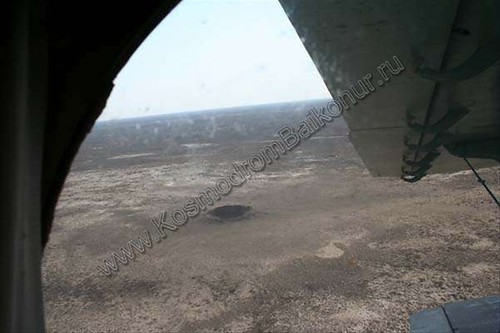Real Russian Rocket Report

Last month’s Dnepr rocket crash in Kazakhstan, which destroyed Montana’s first satellite, blasted a crater 165 feet wide and 50 feet deep. Fortunately, there were no injuries or fatalities in the vast arid steppes near the Uzbek border. What about the environmental damage? Keep in mind most rocket fuel is considered "nasty stuff." According to NBC News space analyst James Oberg, this launch failure’s aftermath is reminiscent of old habits:
Last month’s crash of a Russian Dnepr space booster with 100 tons of toxic rocket propellant poisoned a small corner of the empty steppes in Central Asia — but may have left a wider legacy of bitterness that will impact Russian space activities for years to come.
And whatever the actual cause of the rocket’s embarrassing failure, the poisonous consequences could have been largely avoided if Moscow space officials hadn’t reverted to almost Soviet-style cover-ups and hollow reassurances about the accident.
I found Mr. Oberg’s piece on this topic, featured recently on the MSNBC site, superbly written, accurate and insightful.
Feeling adventurous? Try reading the original report, in Russian, from 31 July 2006. At least you’ll understand the pictures, and the gist of the English translation (scroll down for both).